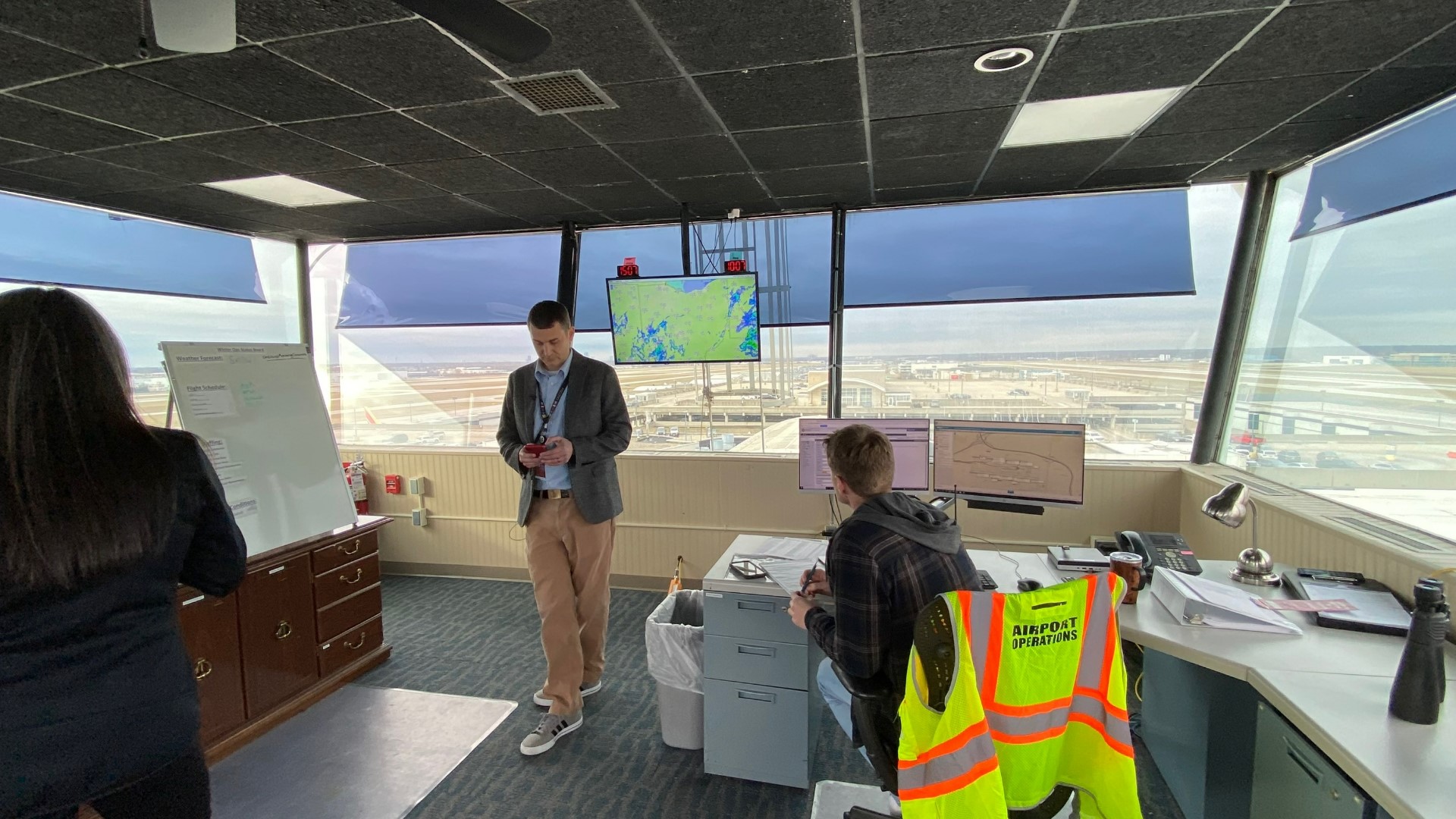COLUMBUS, Ohio — Ten stories above the north and south runways at John Glenn Columbus International Airport, senior manager of airport operations Chris Pollock is watching the sensors on the computer in front him.
The sensors tell him the surface temperatures not only on top of the runway but below. Those readings help him and his team to determine if it’s time to lay deicing liquid, not salt as it is corrosive to aircrafts.
The pending storm will not only bring snow, ice and bitter temperatures, but something the airport can’t correct for: wind gusts. Gusts could be as high as 50 miles per hour.
“That is a concern and they might have to divert to another location if it’s not safe to land here, “Pollock said.
He says pilots often know 15 miles outside of the airport what the weather conditions are at the airport giving them to time to work with the FAA to find an alternative place to land. But this storm system seems unpredictable.
“This event looks like it will be a challenging event,” he said.
One of the ways John Glenn International keeps its runways safe for landing is using something called a friction truck.
A small wheel attached to the back of pickup truck is connected to a sensor which measure how slick a runway has become.
The information is automatically loaded to a computer inside the truck and is beamed to the snow tower where it is distributed to people who make snow removal decisions.
The snow removal team must be ready to de-ice or whisk away as much moisture as it can off the runway, so no plan is forced to divert or cancel a landing.
“We know it takes about 30 to 40 minutes to conduct our snow removal operations and prior to opening it. We make sure it’s 100% safe for airport operations,” Pollock said.
While this weather system will present challenges overnight, the snow team at the airport believes its prepared to handle anything mother nature throws at them.
“We will operate as safe as we can,” Pollock said.

